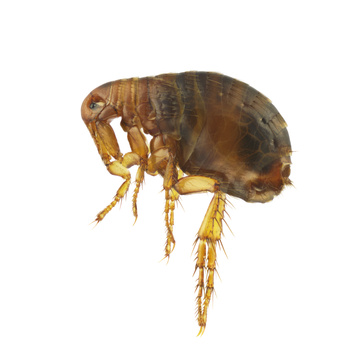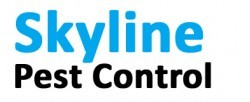 Cat Flea (Ctenocephalides felis)
Cat Flea (Ctenocephalides felis)
The cat flea is small at around 2 mm long, reddish brown in colour and is flattened laterally, a feature which enables it to move easily amongst the hair of its vertebrate host.
The most distinctive features of the cat flea are the large jumping legs and the row of black non-sensory spines on the front margin of the head and on the rear of the first thoracic segment. These bristles or combs are a diagnostic feature of the cat flea.
The eyes are apparent as are the antennae, and the mouth-parts, adapted for piercing and sucking, are typically seen projecting downwards from the head.
Where will you find them?
Although the cat and the dog are the preferred hosts for cat fleas – they are capable of feeding on humans, and frequently do.
The distress caused by the bites can be considerable in cats and humans. The cat flea is an intermediate host for the tapeworm, which normally develops in the digestive tract of the dogs, cats and some wild carnivores, but also occurs in man and particularly young children.
Vibration as a trigger for the adults to emerge from the pupa, mentioned above, frequently means that humans who go into empty premises where cats had previously been “in residence” suffer a high level of attack .
How do we control fleas?
Treatment consists of identifying the source of the infestation, ie: the host animal(s), and if appropriate treating it with a suitable veterinary product. Such a treatment should not be carried out by a pest control technician but by the owner of the animal or a veterinarian.
A residual insecticide should then be applied to areas frequented by the animal. Normally this would consist of spraying all areas in the premises as a precaution. Once the first visit is complete our technician would complete a detailed inspection report explaining what he has done.
The follow up
We would need to carry out two follow up treatments for fleas between 7-10 days apart, the premises are treated in exactly the same way as the initial visit. Once our work is completed our technician will fill out a detailed inspection report and discuss ways of preventing re-infestation.
